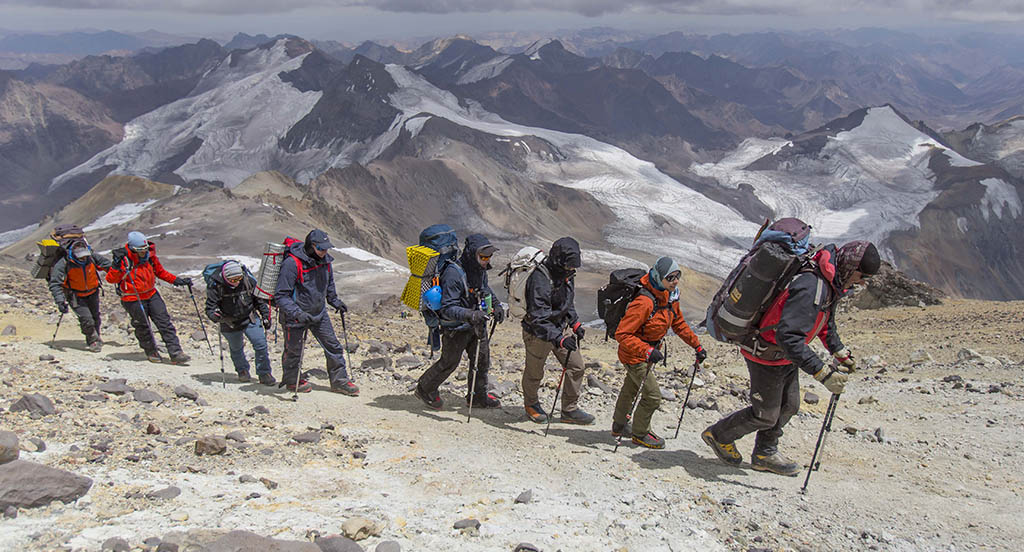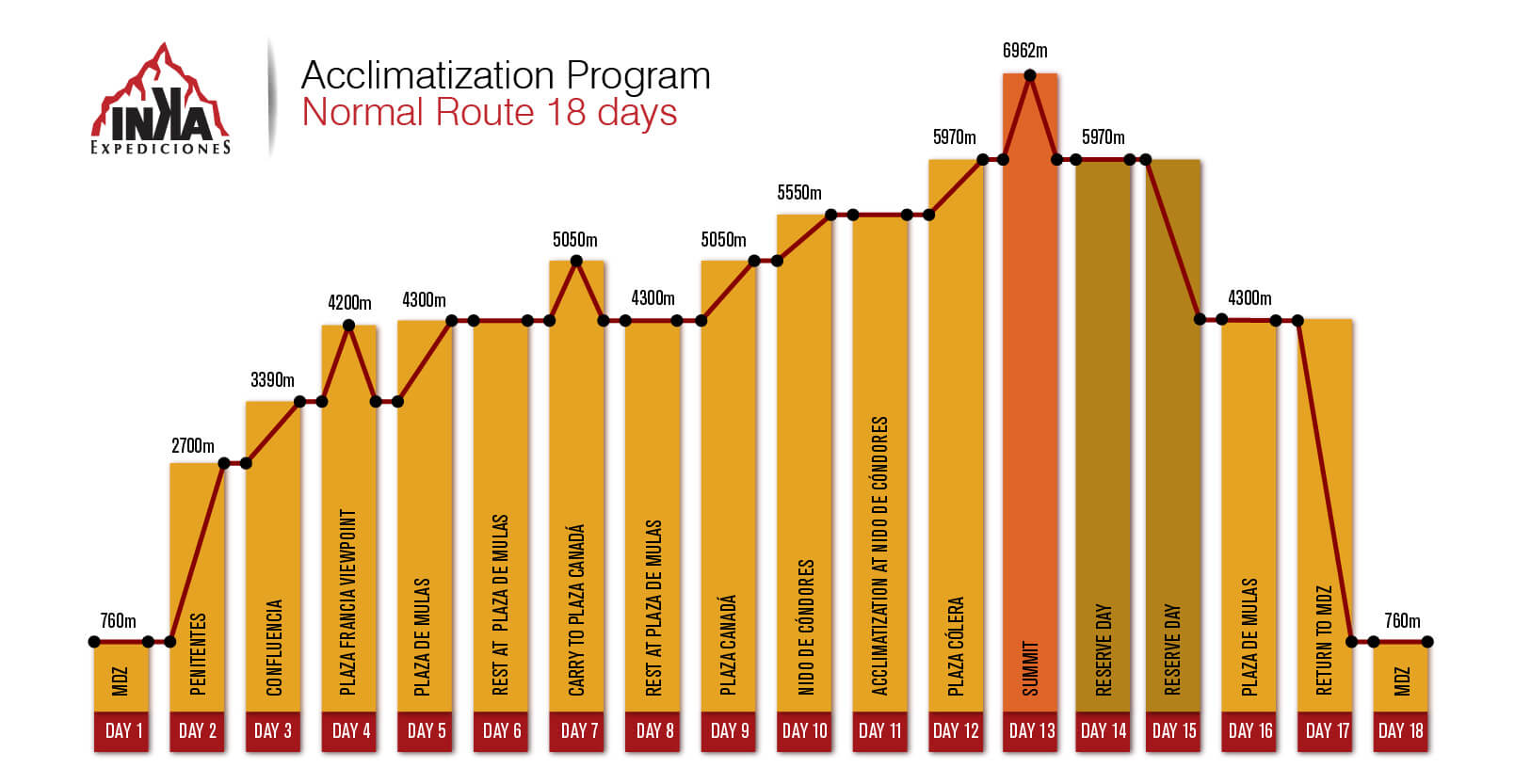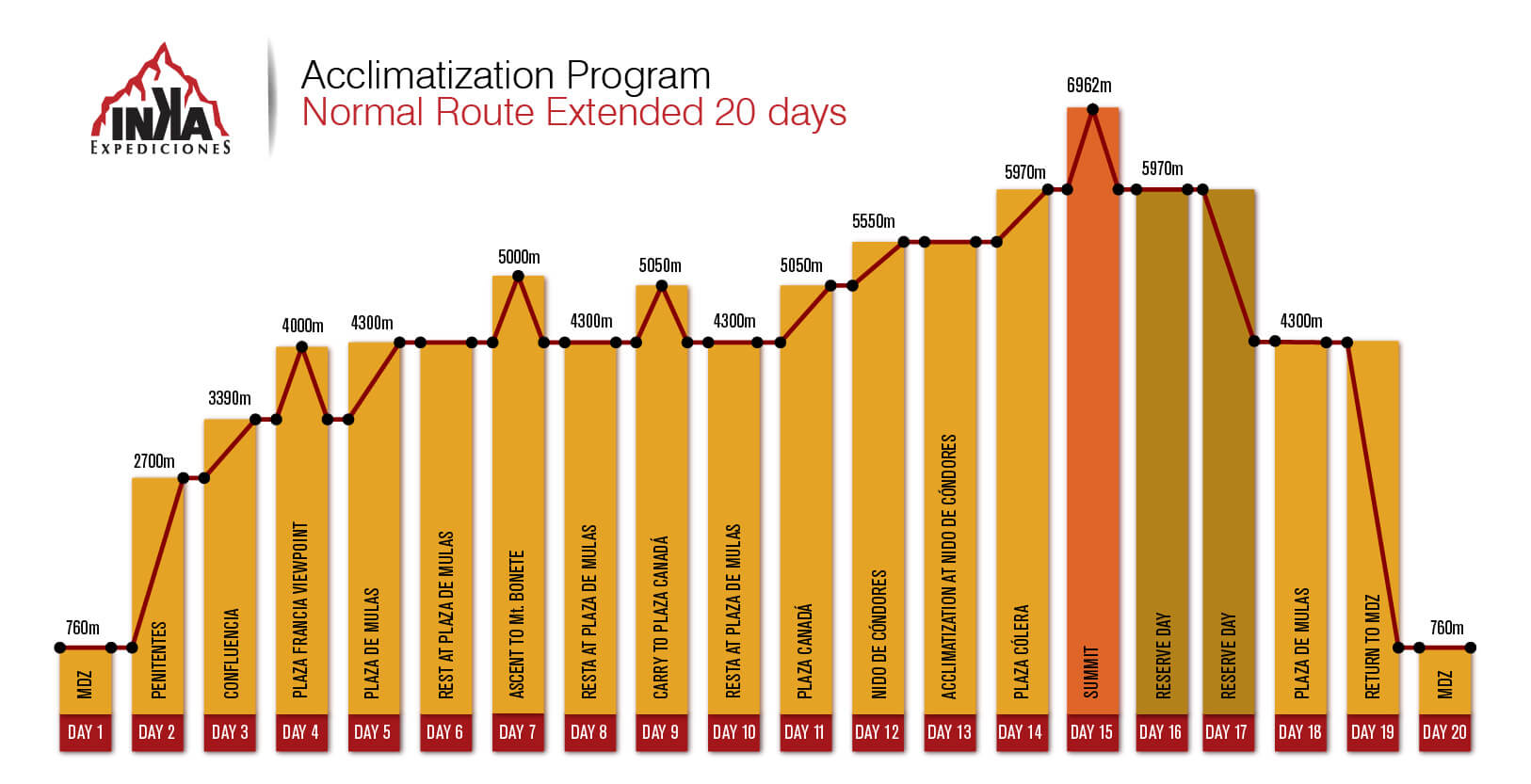FROM THE SECTION:

The main cause to abandon an Aconcagua’s expedition is due to high altitude illness which can be thought ahead with a suitable acclimatization plan.
To prepare this plan we’ve been based on scientific studies and also on our own experience. We strongly do not recommend the quick ascend. It is not advisable to ascent from 2500 mts to almost 7000 mts (Aconcagua Summit) on less than 10 days.
When we design our itineraries we need to balance a good acclimatization with deterioration for the altitude. As much as you stay above 5000mts , your body, you mind and even more your mood deteriorate. At this high you can acclimatize but you spend energy that can be used on summit day. This is the reason we acclimatize properly at lower altitude and stay less time at higher camps so that we save more energy.
The Sawtooth acclimatization technique is the method we use in our expeditions.
It consists in doing some trekking in the mountain but not going higher than 1000 mts and then coming back to sleep at Base Camp. These ascent are useful to know the mountain, to prepare the route, to supply the higher camps and also for the physiological aspect. For those who understand about training associate and compare it with the process to gain the balance between the training and recovering ( supercompensation phenomenon).-
Our itineraries contemplate many gradual ascent, depending on the duration of the expeditions. After the acclimatization trekkings and the gradual ascent we are on our best condition to go for the summit.
SUPERCOMPENSATION PHENOMENON
In sports science theory, supercompensation is the post training period during which the trained function/parameter has a higher performance capacity than it did prior to the training period. The fitness level of a human body in training can be broken down into five periods: initial fitness, parietal fitness training, recovery, and supercompensation. During the initial fitness period, the target of the training has a base level of fitness. Upon entering the training period, the target’s level of fitness decreases. After training, the body enters the recovery period during which level of fitness increases up to the initial fitness level.
Because the human body is an adjustable organism, it will feel the need to adjust itself to a higher level of fitness in anticipation of the next training session.If the next workout takes place during the recovery period, overtraining may occur. If the next workout takes place during the supercompensation period, the body will advance to a higher level of fitness. If the next workout takes place after the supercompensation period, the body will remain at the base level.
OUR EXPEDITION’S ACCLIMATIZATION PROGRAMS



